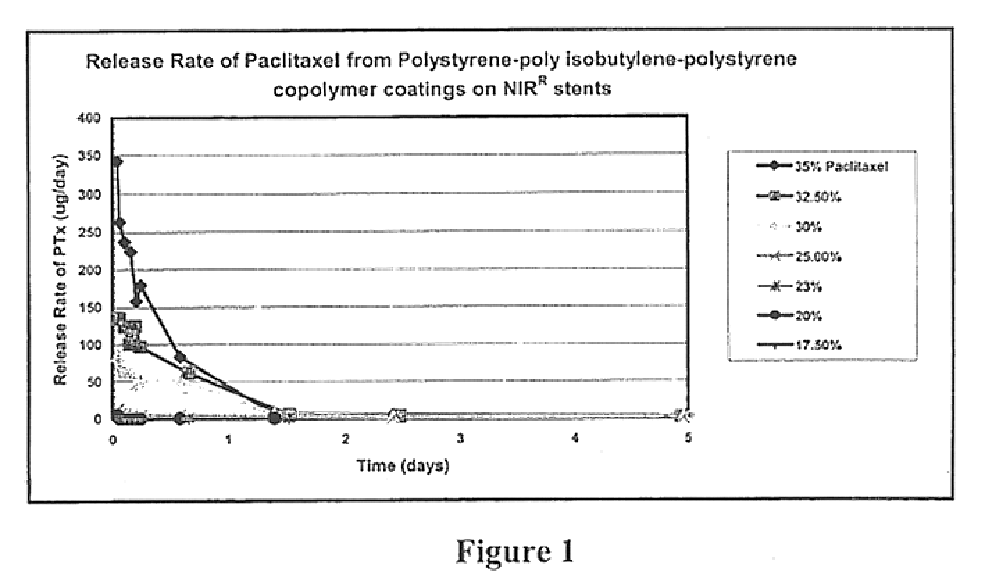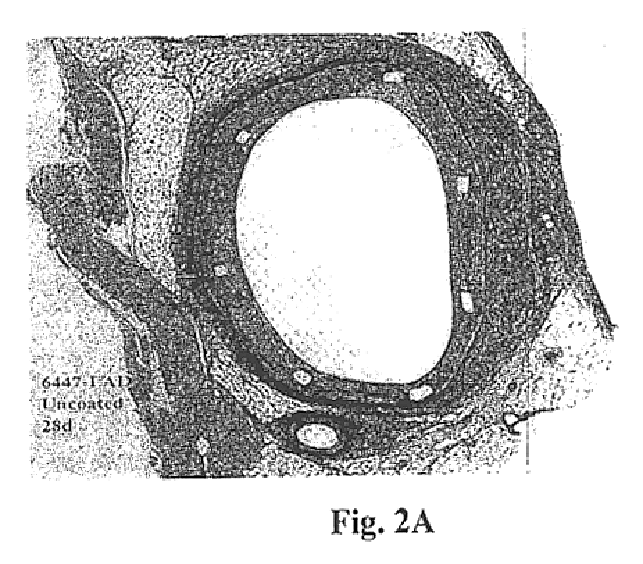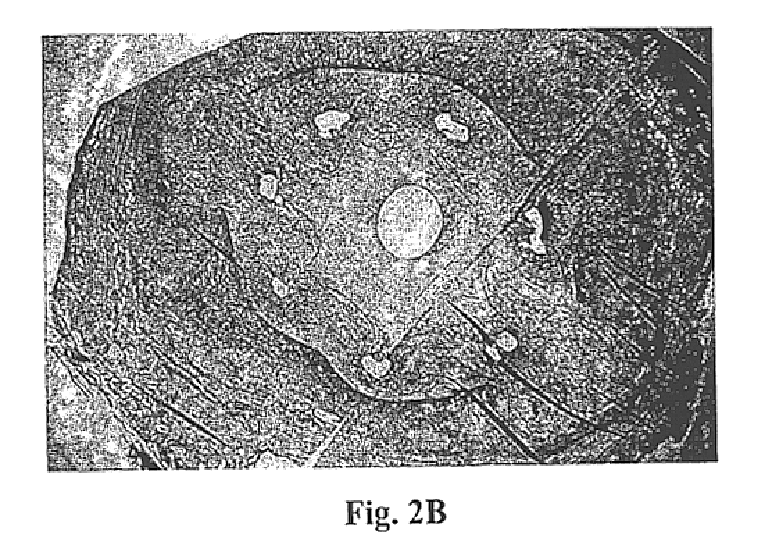Drug delivery compositions and medical devices containing block copolymer
a technology of copolymer and composition, which is applied in the direction of drug composition, prosthesis, microcapsules, etc., can solve the problems of frequent elicitation of vigorous immune or foreign body response of polymers, and achieve good biocompatibility, good mechanical integrity, and reduced inflammation and neointimal thickening
- Summary
- Abstract
- Description
- Claims
- Application Information
AI Technical Summary
Benefits of technology
Problems solved by technology
Method used
Image
Examples
example 1
Block Copolymer Synthesis
A styrene-isobutylene-styrene block copolymer is synthesized using known techniques. As is well known by those versed in the art of cationic chemistry, all solvents and reactants must be moisture, acid and inhibitor-free. Therefore, it may be necessary, depending upon the grade of material purchased, to distill these chemicals or flow them through columns containing drying agents, inhibitor removers and the like, prior to introducing them into the reaction procedure.
Assuming that all solvents are pure and moisture- and inhibitor-free, styrene is added to a dried, airtight styrene mixing tank. The tank is initially chilled to between −19° C. (the condensation point of methyl chloride) and −31° C. (the freezing point of pure styrene) using liquid nitrogen or other heat transfer media, whereupon methyl chloride gas is condensed and added. Next, di tert-butyl-pyridine is mixed with hexanes and added to the styrene tank, followed by flushing with further hexanes....
example 2
Solvent-based Coating Technique
An example of a solvent-based technique for coating a medical device, such as a stent, follows. As always, the solvent system selected for use in such a procedure will depend upon the nature of the block copolymer and therapeutic agent selected. In the case of a polystyrene-polyisobutylene-polystyrene triblock copolymer and paclitaxel therapeutic agent, a preferred solution is one containing (1) between 0-94%, preferably 94%, toluene, (2) between 5%-99%, preferably 5%, tetrahydrofuran and (3) 1% copolymer and paclitaxel combined. Such a solution can be provided by (1) mixing the paclitaxel and tetrahydrofuran, (2) adding the copolymer, (3) adding the toluene, (4) thorough mixing (e.g., overnight), and (5) filtering (e.g., through a fine filter such as a 0.22 micron filter). The solution of interest can then be placed in a syringe pump, and the fluid can be fed to a spray nozzle. The component of interest (e.g., catheter, catheter balloon, stent, stent ...
example 3
Solvent-based Coating Technique
In another preferred process, a solution like that above containing (1) between 0-94% toluene, (2) between 5-99% tetrahydrofuran and (3) 1% polystyrene-polyisobutylene-polystyrene copolymer and paclitaxel is sprayed with an airbrush onto a rotating medical device component, such as a stent. The environment is controlled during spraying so that the tetrahydrofuran and toluene evaporates between the sprayer and the component, allowing a porous mat loaded with a therapeutic agent to be formed on the rotating component. Spraying is stopped when the desired coating thickness is achieved.
PUM
| Property | Measurement | Unit |
|---|---|---|
| thickness | aaaaa | aaaaa |
| mol % | aaaaa | aaaaa |
| mol % | aaaaa | aaaaa |
Abstract
Description
Claims
Application Information
 Login to View More
Login to View More - R&D
- Intellectual Property
- Life Sciences
- Materials
- Tech Scout
- Unparalleled Data Quality
- Higher Quality Content
- 60% Fewer Hallucinations
Browse by: Latest US Patents, China's latest patents, Technical Efficacy Thesaurus, Application Domain, Technology Topic, Popular Technical Reports.
© 2025 PatSnap. All rights reserved.Legal|Privacy policy|Modern Slavery Act Transparency Statement|Sitemap|About US| Contact US: help@patsnap.com



